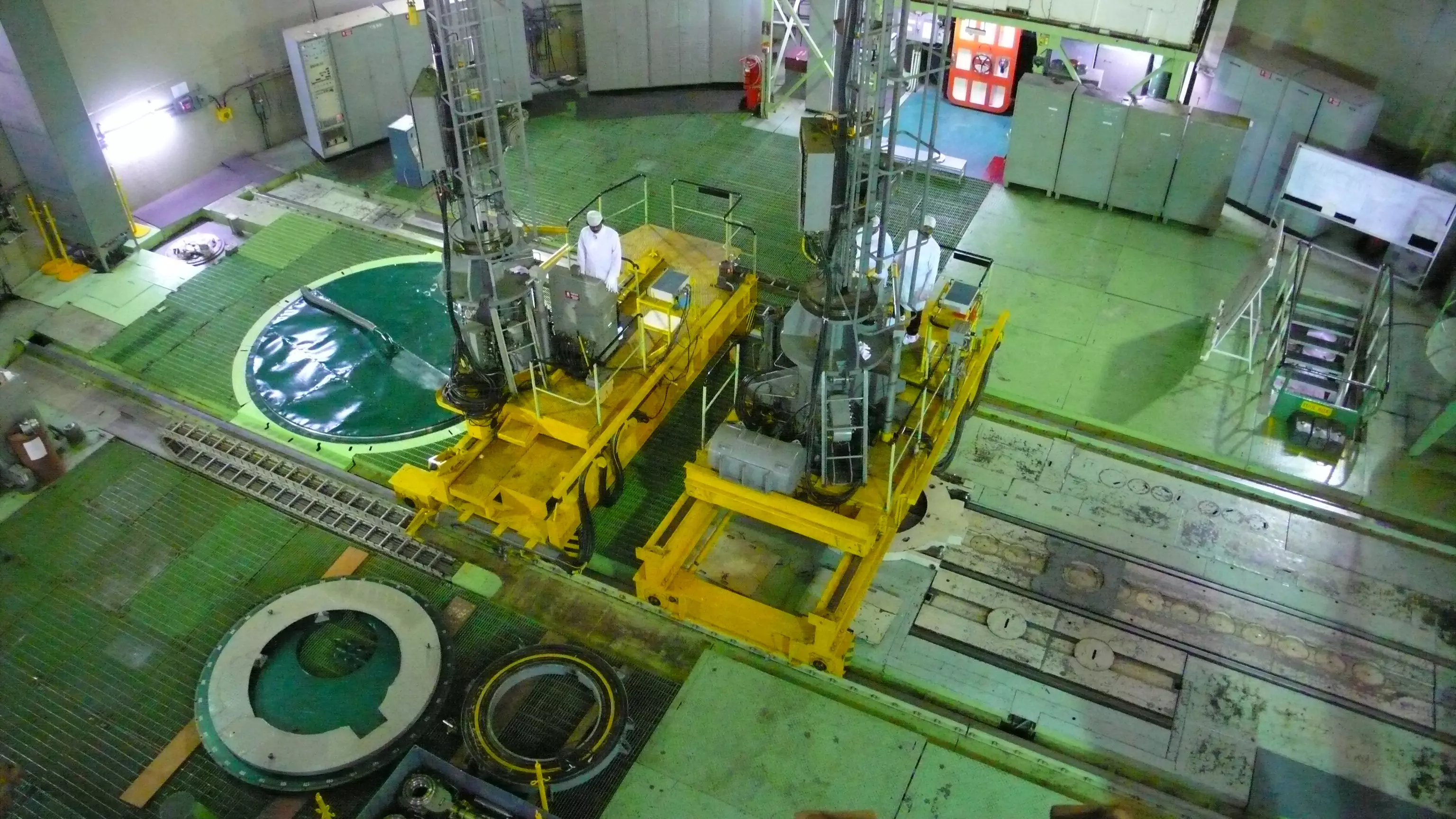
Kalpakkam nuclear reactor: Expert views on concerns, delays
Is the Prototype Fast Breeder Reactor an outdated technology not tested anywhere outside India? Was there an inordinate delay in the project?

Last week, Prime Minister Narendra Modi witnessed, as the Press Information Bureau (PIB) put it, a "historic milestone" in India’s nuclear programme.
Modi was getting a ringside view of India's entry into what PIB called the vital second stage of its three stage nuclear programme – 'the commencement of Core Loading of the indigenously built Prototype Fast Breeder Reactor (PFBR)' – at the Madras Atomic Power Station in Kalpakkam.
This is said to be a key indigenous project that would contribute to India’s energy basket. Many experts and environmentalists, however, have mixed views about the significance of an indigenously designed and built nuclear reactor.
Experts are asking whether this is a new technology at all and whether this 'historic' programme is nothing but an election stunt by Modi.
Opposition for fast breeder
The Kalpakkam plant has a three-stage setup. Since PFBR is an advanced third generation reactor, it uses the spent fuel from the first stage, offering a great advantage in terms of significant reduction in nuclear waste generated, thereby avoiding the need for large geological disposal facilities.
Moreover, unlike many countries which use uranium for the light water reactor as fuel, India uses refined thorium. India is known to possess the second largest reserves of thorium, and so nuclear scientists opted to use refined thorium instead of uranium to produce nuclear fuel. Thorium reserves are abundantly found in the coastal areas of Tamil Nadu and Kerala.
But, despite these advantages, some experts have raised some doubts about the nuclear reactor. Chennai-based environmentalist G Sundarrajan alleges that the technology, which is celebrated as indigenous, is actually an “outdated” one.
Speaking to The Federal he said, “India claims to be the first in the race where nobody else is actually running. Many countries which were using this fast breeder technology are actually shutting it down. India is the only country, which is spending huge amounts of money on this research and there’s nothing special here to term it indigenous. Actually, in this abandoned technology, the Indian government is using eight crore Tamil people as lab rats.”
Moreover, according to Sundarrajan, this reactor technology has not been tested or tried anywhere in the world, and its installation can actually turn out to be a threat or risk.
Delay for two decades
Other experts are more concerned over the inordinate delay in the project, of nearly two decades. There were several questions raised in Parliament related to PFBR’s operational time and the amount of power it will generate.
Science columnist R Ramachandran, who has chronicled the developments related to PFBR, said the project witnessed several delays due to technical and other reasons.
“Since this project was approved in the year of 2003, with a deadline of completing the project in 2013 itself, it has been delayed by more than a decade now. That said, this is a technology not tried by many countries. If this core loading of PFBR becomes successful, India will become the second country after Russia actually to have commissioned and operating a breeder reactor,” he said.
But, unlike Sundarrajan, Ramachandran said the technology is an indigenous one since not many countries are pursuing the same features.
He explained, “India’s nuclear projects entirely are indigenous because we were never part of the global trade regime of nuclear technology. All our Pressurized Heavy Water Reactors are indigenous. We have 22 reactors and all are indigenous except Koodankulam 1 and 2, which were built by the Russians. To face our fuel needs, we can’t rely on importing, so thorium is available in the sands of south India. Making use of it is a reliable option for us and will help us to meet our energy needs. With that perspective, a three stage nuclear project was designed.”
Bombs given preference
TR Govindarajan, a retired professor of theoretical physics, gave another reason for the big delay in the project.
“We were focussed on making bombs and not on energy production. If we had focussed on nuclear energy to meet our energy needs, it would have been beneficial for us. And, this is a technology which nobody will give you. We have to develop it on our own. We have to learn to do it by ourselves,” he pointed out.
Meanwhile, experts raised doubts over the government’s choice of words to announce the functioning of PFBR. India called it the 'commencement of the core loading of the PFBR' instead of using the usual term “commissioning”.
Govindarrajan felt that the BJP-led government was eager to show some sort of achievement in the Madras Atomic Station in the election year.
“We are not sure about the result. It will take, at least, a year or two to have an estimate of the actual energy production in the plant,” he said.

